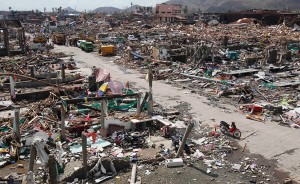On Monday, April 25, Canadian hostage, John Risdsel, was executed in the Philippines by Islamic militant group Abu Sayyaf.
Risdsel’s severed head appeared on the remote island of Jolo Monday, just five hours after a ransom deadline set by the militants had expired. According to Reuters, the group demanded 600 million pecos ($6.4 million) for each of the captives and threatened to behead one of their four captives if the deadline was not met. Locals reported seeing two men on a motorcycle drop off a plastic bag that contained the head in the center of town and then fled.
 Risdsel was one of three captives who were taken from the Oceanview Resort on Samal Island in the Philippines on September 21, 2015. The captive group was made up of Risdsel; fellow Canadian, Robert Hall; Hall’s girlfriend and Filipino native, Marites Flor; and Norwegian, Kjartan Sekkingstad. According to CNN, this part of the Southern Philippines is home to the militant group, who has been linked to both al Qaeda and ISIS. CNN reported, this is not the first time the group has taken foreigners as hostages. In recent years the group has preyed on tourists, taking them hostage in an attempt to “further its aims.” The Philippine government, however, denounced the group as a terrorist organization, claiming they operate more like a criminal gang.
Risdsel was one of three captives who were taken from the Oceanview Resort on Samal Island in the Philippines on September 21, 2015. The captive group was made up of Risdsel; fellow Canadian, Robert Hall; Hall’s girlfriend and Filipino native, Marites Flor; and Norwegian, Kjartan Sekkingstad. According to CNN, this part of the Southern Philippines is home to the militant group, who has been linked to both al Qaeda and ISIS. CNN reported, this is not the first time the group has taken foreigners as hostages. In recent years the group has preyed on tourists, taking them hostage in an attempt to “further its aims.” The Philippine government, however, denounced the group as a terrorist organization, claiming they operate more like a criminal gang.
According to The Chicago Tribune, the group is also believed to have other captives including “a Dutch man, a Japanese and a group of Malaysian and Indonesian seamen.” The group abducted the Malaysian and Indonesian seamen at gunpoint from tugboats at the beginning of last month. In November, the group beheaded a Malaysian hostage on the same day that the Malaysian prime minister was scheduled to arrive in Manila for a summit.
Last month the group released a video of the hostages appearing to beg for their lives, and for the government and their families to secure their release. It is in this video that the threat was made to harm one of the captives if the group’s demands were not met. Bob Rae, a close friend of Risdsel’s, was quoted in a CNN article as saying “lots of effort” was made to comply with the demands, but the amount of money requested was simply too high. In the video heavily armed militants can be seen standing behind the hostages with large black flags hanging behind them.
The 68 year old Canadian native was a former chief mining officer of a mining company, described as “semi-retired” in a BBC news story, who also worked as a journalist. Justin Trudeau, Canadian prime minister, was quoted as stating Risdsel was killed in “cold blooded murder” by the group. He also said Canada would work with the Philippines and other international forces to bring justice to Risdsel’s death. Rae said in BBC article, ““It’s just very hard. I’ve been involved behind the scenes for the last six months trying to find a solution and it’s been very painful.”

